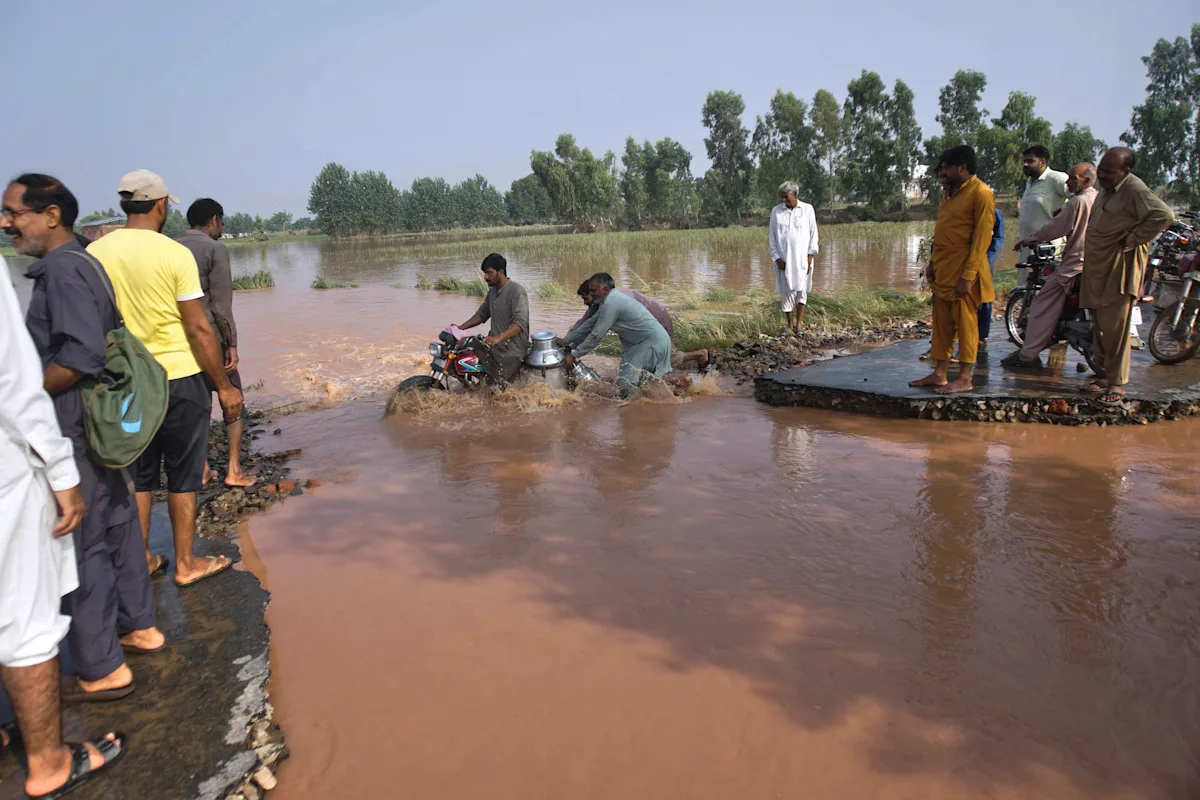Floods have long been a recurring natural disaster in South Asia, but the Floods in Pakistan 2025 have emerged as one of the most catastrophic in recent memory. This calamity has not only reshaped the country’s geography but also disrupted millions of lives, leaving behind stories of loss, resilience, and a nation struggling to rebuild. Understanding the causes of floods in Pakistan, their far-reaching consequences, and the roadmap for Pakistan flood recovery plans is crucial for both citizens and policymakers.
In this comprehensive article, we will explore the underlying reasons behind floods in Pakistan 2025, the economic consequences of Pakistan floods, and how communities are attempting to rise above this natural tragedy.
1. An Overview of Floods in Pakistan 2025
The Pakistan floods 2025 struck with devastating force during the monsoon season, displacing millions of people and submerging large swathes of farmland, cities, and infrastructure. Torrential rains, coupled with overflowing rivers and melting glaciers, converged to unleash what many experts now term as the most significant flood disaster in Pakistan over the past decade.
Satellite images showed entire districts swallowed by water, while rescue operations faced severe hurdles due to washed-away roads and collapsed bridges. The flood impact on Pakistan 2025 is being compared with earlier disasters, but experts agree this year’s flooding has surpassed all previous records in terms of destruction and disruption.
2. Causes of Floods in Pakistan
Understanding the causes of floods in Pakistan is vital to prevent similar tragedies in the future. Some of the key factors behind this year’s disaster include:
a) Heavy Monsoon Rains
The South Asian monsoon arrived with unexpected intensity, bringing continuous downpours that exceeded historical averages. Rainfall in 2025 reached nearly double the normal levels in some provinces.
b) Melting Glaciers
With global warming accelerating, glaciers in northern Pakistan are melting at alarming rates. This contributed to higher river flows, exacerbating the situation.
c) Poor Infrastructure and Urban Planning
Unregulated construction along riverbanks, lack of proper drainage systems, and weak flood embankments worsened the flooding.
d) Climate Change
The undeniable influence of climate change and floods in Pakistan cannot be ignored. Rising temperatures and unpredictable weather patterns are intensifying natural disasters across the country.
3. Reasons Behind Floods in Pakistan 2025
The reasons behind floods in Pakistan 2025 go beyond natural factors. Mismanagement, delayed government responses, and lack of disaster-preparedness have magnified the scale of destruction. Had there been effective early-warning systems and stronger policies, the loss could have been significantly reduced.
4. Consequences of Pakistan Floods
The consequences of Pakistan floods are widespread, touching every sector of society.
- Humanitarian Crisis: Millions lost their homes, and displacement camps are overcrowded.
- Health Challenges: Outbreaks of waterborne diseases such as cholera and dengue fever have surged.
- Agricultural Losses: Crops including wheat, cotton, and rice have been wiped out, creating fears of food shortages.
- Infrastructure Damage: Roads, schools, and hospitals have been destroyed, delaying rehabilitation.
- Social Disruption: Families separated, loss of livelihoods, and migration to urban centers are changing demographics.
5. Economic Consequences of Pakistan Floods
The economic consequences of Pakistan floods in 2025 are staggering. Billions of dollars in damages have been reported. Agriculture, the backbone of Pakistan’s economy, has been hit hardest. With exports such as textiles and rice disrupted, the national GDP is expected to shrink.
Foreign investments have slowed, while inflation has spiked due to food scarcity. The cost of rebuilding infrastructure and providing relief is straining an already fragile economy.
6. Flood Impact on Pakistan 2025
The flood impact on Pakistan 2025 is not just economic but psychological. Communities have endured trauma, children’s education has been halted, and healthcare systems are stretched thin. Many flood-hit regions are likely to face long-term poverty if not provided with adequate assistance.
Environmental degradation is another major consequence. Floodwaters have eroded fertile soil, and deforestation in upstream areas has worsened the flooding patterns.
7. Government Response to Floods in Pakistan
The government response to floods in Pakistan has been mixed. While rescue teams, the army, and civil defense departments rushed to action, critics argue that relief efforts were delayed and insufficient.
- Emergency shelters were set up, but demand far exceeded capacity.
- Financial aid was announced for affected families, though distribution remains inconsistent.
- Calls for stronger disaster-preparedness policies have grown louder, with citizens urging long-term planning instead of reactive measures.
8. Pakistan Flood Relief Efforts
Despite challenges, the Pakistan flood relief efforts have been supported by NGOs, international donors, and local volunteers. Food distribution camps, medical teams, and rehabilitation centers are working tirelessly. International organizations like the UN and Red Crescent have pledged aid.
The resilience of local communities is also remarkable, with neighbors supporting each other and grassroots organizations stepping in where government systems lag.
9. Pakistan Flood Recovery Plans
Moving forward, Pakistan flood recovery plans are critical for rebuilding lives and infrastructure. Some proposed measures include:
- Strengthening Embankments: Building stronger dams and levees to protect vulnerable regions.
- Improved Drainage Systems: Modernizing urban drainage to prevent city flooding.
- Sustainable Agriculture: Supporting farmers with climate-resilient crops.
- Housing Rehabilitation: Constructing flood-resistant housing in high-risk zones.
- Long-Term Climate Strategy: Implementing national policies to combat the growing threat of climate change and floods in Pakistan.
10. How Pakistan Is Recovering from 2025 Floods
Recovery is a slow but ongoing process. How Pakistan is recovering from 2025 floods can be seen in:
- Communities rebuilding homes with support from NGOs.
- Farmers being provided with seeds and fertilizers.
- Schools gradually reopening with makeshift classrooms.
- Psychological support programs being introduced for trauma-affected individuals.
Yet, challenges remain immense, and only sustained efforts will ensure long-term rehabilitation.
11. Lessons Learned from Floods in Pakistan 2025
The Floods in Pakistan 2025 serve as a stark reminder of the urgent need for climate adaptation and disaster preparedness. Lessons include:
- Strengthening early-warning systems.
- Enforcing urban planning laws.
- Raising awareness about flood safety.
- Promoting regional cooperation for water management.
12. Conclusion
The Floods in Pakistan 2025 have shaken the country to its core, exposing vulnerabilities while also showcasing resilience. From the causes of floods in Pakistan to the consequences of Pakistan floods and the roadmap for Pakistan flood recovery plans, this disaster highlights the urgent need for sustainable solutions.
Pakistan’s path forward requires a blend of strong governance, climate adaptation, community resilience, and international support. Only then can the country move from surviving disasters to preventing them.
GloballyUpdates Providing Full Information on Floods in Pakistan
Click Here to Stay Informed with GloballyUpdates – Informing Pakistan’s public with real-time news, in-depth reports, and complete coverage on Floods in Pakistan and beyond.



